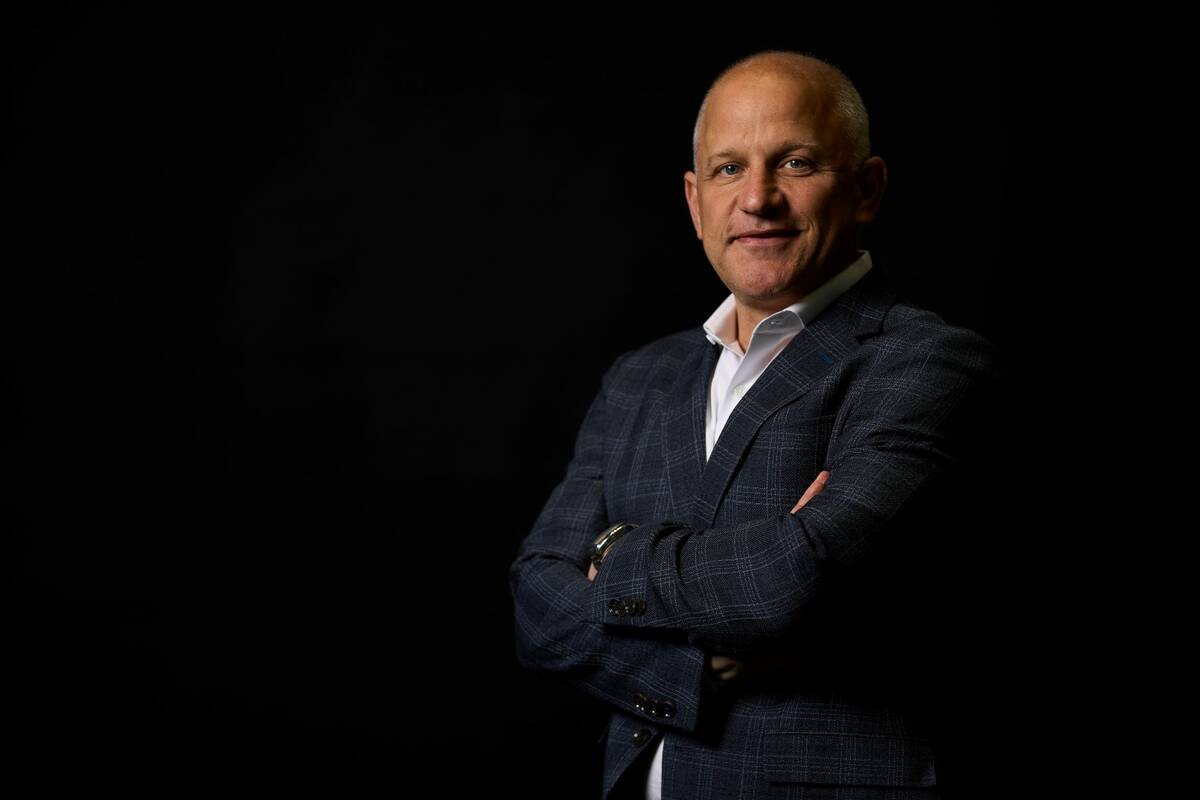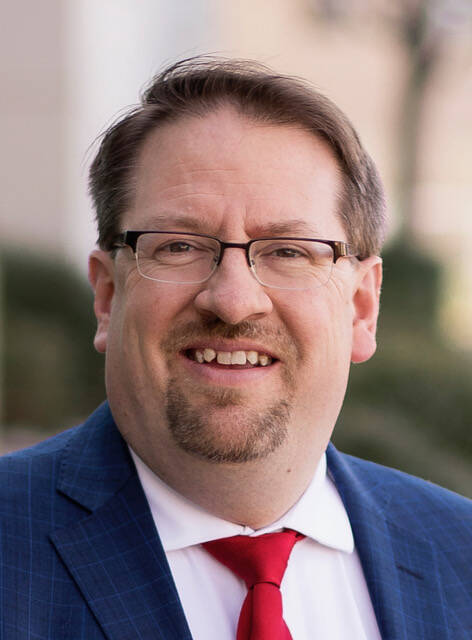Far South Las Vegas Boulevard south of the Strip is about to undergo some changes that could be transformative long term just as the expectations are with the $2 billion Allegiant Stadium.
The construction of a casino resort with its own entertainment district and arena four miles south of the Strip is expected to spur further development along the Las Vegas Boulevard corridor and have lasting impact once it comes to fruition just as the Formula One paddock is expected to have east of the Strip and $1.5 billion A’s baseball stadium on the former Tropicana Las Vegas site when its built in 2028.
No timeline has been given to start the $10 billion project of the Oak View Group, the sports entertainment venue development, advisory and investment firm. As for the $1 billion arena that developers hope will host an NBA team, that would take 27 to 31 months to complete once it starts.
“Our company would like to be a part of the evolution of Las Vegas and build a new venue (with a) new entertainment and retail (space) and integrated casino and resort that continues that evolution,” said Marc Badain, president of the Oak View Group and former president of the Las Vegas Raiders, at a NAIOP Southern Nevada event. “You’re seeing investment heading south, and we’re pretty bullish on the South Strip going all the way down to where Station Casinos has some pretty big expansion plans down there (near the South Point), and the M Resort (at Las Vegas Boulevard and St. Rose Parkway) is building another tower. You have the Brightline West train (between Los Angeles and Las Vegas with a station adjacent to the Oak View site) about to get underway. The area south of Mandalay Bay is ripe for a lot of growth. We’re very excited to be part of that.”
Oliver Lovat, CEO of the Denstone Group, said the elevated land prices on the Strip makes it difficult to re-create the major development of the last 40 years as “too prohibitive.” New developments on the Strip will have smaller footprints and go higher in elevation, but bigger ones have to look south, he added.
“For those people who want to build large and expansive developments and resorts that are not on the one or two available parcels that are left on the Strip, that leaves you to build to the south where there’s land,” Lovat said. “For those more adventurous resorts, that’s the only place you can go if you want to stay on the Strip corridor.”
Lovat said based on the success of these new resorts that are built on Las Vegas Boulevard South, others are sure to follow.
“The center of gravity on the Strip has always moved,” Lovat said. “You go back to the 1950s and the center of gravity was where the Riviera, Desert Inn and Sands were and even in 1957 when the Tropicana opened it was seen as way off the pitch. I remember starting in the 1990s if you wanted to go from one property to the other you had to take a cab.”
Lovat said he’s not worried about over saturation. The market has proved in every era that when new supply is added over time demand meets that supply, he noted.
“Are people going to stop coming to Las Vegas? I don’t think so. It’s one of the most popular destinations for booking this summer in North America. With the (planned) new airport to open toward Primm (in the future), the old adage of location comes into play. Those resorts are closer to the airport than a highly congested Strip. And you drive past those resorts from California in your car (or) when you come by train.”
Josh Swissman, founding partner and managing director at GMA Consulting, said the growth is coming in that far (to the) South Las Vegas Boulevard corridor punctuated by the Oak View project. Even though it appears to be taking longer than anticipated, he said he’s excited about it because it “shifts the balance of the force way far south,” Swissman said.
“Why that excites me is because it extends the Las Vegas Strip further south, which ultimately means more growth,” Swissman said. “Even with all of those growth projects, there will be a considerable amount of undeveloped and underdeveloped real estate in between all of those things. The previous southern boundary of the Las Vegas Strip is Mandalay Bay, and if these efforts serve as a catalyst to increase the length of the Strip it’s a great thing.”
Swissman said there will be other benefits that come with that in the form of commercial and housing development that are spurred by those projects over a longer period of time.
“It serves what could potentially be an amazing catalyst for growth of the industry, growth of the Strip and growth of the city more broadly than just additional gaming facilities,” Swissman said. “And, if you’re dumping people off with this new train, that’s another catalyst for extending the Strip to that part of Las Vegas Boulevard.”
Brendan Bussmann, managing partner of B Global, said the idea that there would be more resort development on South Las Vegas Boulevard south of the Strip was always the intent based on zoning allowed by Clark County.
“There was always an opportunity to do that, but it was just a matter of how it looks,” Bussmann said. “There will be other opportunities.”
Bussmann said the Oak View project will be more aligned with the Strip catering to tourists while the South Point and further south are geared for local customers. Harry Reid International Airport limits, however, projects between Russell Road heading south because of height limitations with the flight pattern, he added.
“The corridor and area continues to grow but it’s no different than we have seen with Allegiant Stadium and some of the things west of the I-15,” Bussmann said. “From Russell Road upward, that will start filling in and there will be an evolution all the way up to the Palms. It’s no different than the west side of the I-15 between Spring Mountain Road and Sahara Avenue. You saw what Station Casinos did and you got Area 15 there. That all used to be one-story Class B office or industrial space. It shows the evolution of the city and our ability to grow.”
Badain contends once their project is up and running, it will add value for the surrounding businesses and spur ancillary development in that corridor just like it did with Allegiant Stadium.
“If you look at the Allegiant Stadium area seven to eight years ago there wasn’t much surrounding development,” Badain said. “I’m surprised it hasn’t grown faster but there are things in the pipeline. Look at what the Herbst family did on the corner of Polaris Avenue and Russell Road with the multiuse building and parking garage and bar and Starbucks that will drive a lot of economic activity. Right across the street you have the In-N-Out Burger and they turned that into a replica of the first In-N-Out-Burger. You’re starting to see it. These projects have the initial push with the construction jobs and surrounding value that they add to the real estate that maybe they have control of or entrepreneurs have control over.”











